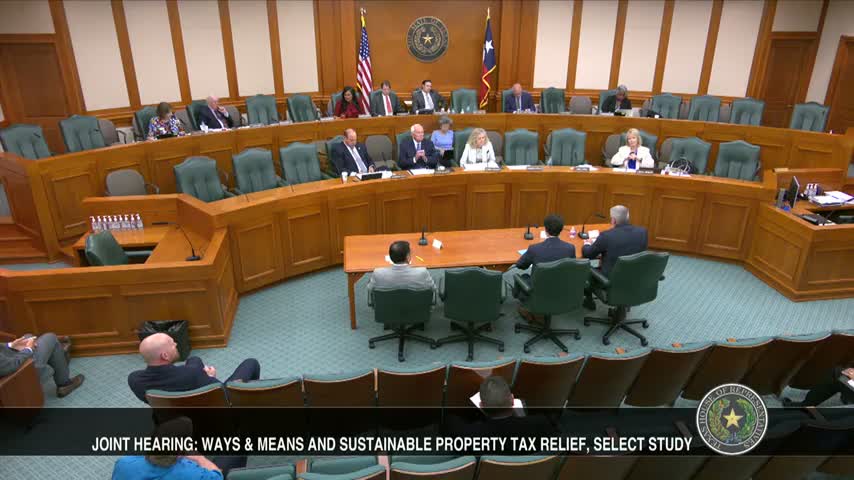Senate bill sparks debate over costly appraisal board elections
September 26, 2024 | Committee on Ways & Means, HOUSE OF REPRESENTATIVES, Legislative, Texas
This article was created by AI summarizing key points discussed. AI makes mistakes, so for full details and context, please refer to the video of the full meeting. Please report any errors so we can fix them. Report an error »

In a recent government meeting, discussions centered around the implementation of Senate Bill 2, which establishes elected appraisal district boards of directors in populous counties across Texas. The bill defines populous counties as those with a population of 75,000 or more, totaling 50 counties in the state. Each of these counties is required to form a nine-member board, comprising five members appointed by taxing units, three elected by the public, and the tax assessor-collector serving as a voting member.
As the first election cycle approaches in 2024, it was revealed that only 20 of the 50 counties have enough candidates to hold elections, with six counties facing runoff elections. The total cost for these elections is projected to reach $15 million, raising concerns about the financial implications of a system that many counties struggle to fill.
One significant proposal discussed was the shift from a majority vote to a plurality vote for board elections. Advocates argue that this change could eliminate the need for costly runoff elections, thereby reducing expenses.
Additionally, there were calls for mandatory training for newly elected board members to clarify their roles and responsibilities. It was noted that many members were unaware of the limitations of their positions, leading to confusion and frustration. The suggestion included providing an informational packet alongside candidate filings to better inform potential candidates about the responsibilities of serving on the board.
The meeting also highlighted ongoing discussions regarding the appraisal process and potential conflicts within the tax code, specifically referencing Section 23.01, which mandates that property be appraised at its market value as of January 1st. This aspect of the discussion underscores the complexities and challenges facing appraisal district boards as they navigate their new responsibilities.
As the first election cycle approaches in 2024, it was revealed that only 20 of the 50 counties have enough candidates to hold elections, with six counties facing runoff elections. The total cost for these elections is projected to reach $15 million, raising concerns about the financial implications of a system that many counties struggle to fill.
One significant proposal discussed was the shift from a majority vote to a plurality vote for board elections. Advocates argue that this change could eliminate the need for costly runoff elections, thereby reducing expenses.
Additionally, there were calls for mandatory training for newly elected board members to clarify their roles and responsibilities. It was noted that many members were unaware of the limitations of their positions, leading to confusion and frustration. The suggestion included providing an informational packet alongside candidate filings to better inform potential candidates about the responsibilities of serving on the board.
The meeting also highlighted ongoing discussions regarding the appraisal process and potential conflicts within the tax code, specifically referencing Section 23.01, which mandates that property be appraised at its market value as of January 1st. This aspect of the discussion underscores the complexities and challenges facing appraisal district boards as they navigate their new responsibilities.
View full meeting
This article is based on a recent meeting—watch the full video and explore the complete transcript for deeper insights into the discussion.
View full meeting
